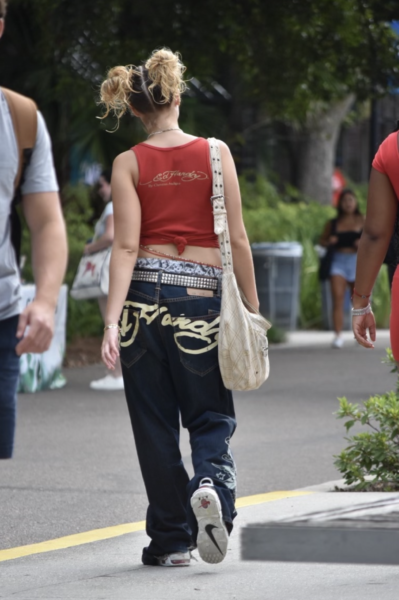
The comeback of low-rise baggy jeans, sheer slip dresses, miniskirts, graphic tees and accessory overload has everyone thinking we took a time machine back to the ‘90s. It’s even happening right here on Tulane’s campus.
Nineties fashion proved to be a hard transition for brands like Marc Jacobs, who CNN Style criticized for putting “unstructured pieces on the catwalk.” His 1993 runway show displayed Doc Martens, long flowy skirts and dresses. It is interesting to see how many of these trends are considered to be the norm now. Fast-forward a year to 1994 — Chanel’s spring line featured the clothing we see today: baggy boy-shorts, chunky gold accessories and low-rise baggy jeans.
Over 20 years later, social media influencers promote these trends. The only way to understand this flashback to the past is to understand the 20-year rule: trends in fashion come in cycles of roughly 20 years.
What better way to get the forecast of these “trend-cycles” than asking the people who are experts on fashion? Tulane University’s Fashion Club welcomes anyone who is willing to immerse themselves in the world of fashion, no matter their prior knowledge. The club’s love for fashion and design provides a new perspective on the trends happening on campus.
Zoe Dupre, writer for the TU Fashion website, shared her take on what era many Tulane’s students’ fashion style falls into. “I feel like now we’re kind of going into more of the ‘90s, like late ’90s, punk rock in that aspect of vintage style,” Dupre said. “We’re kind of getting out of our Y2k aesthetic and getting into more of a bohemian side … a lot of people’s fashion is more vintage and more one-of-a-kind pieces.”
These pieces include the criticized “unstructured pieces” Marc Jacobs displayed in 1993. While this return of “unstructured pieces” aligns with the 20-year rule, this generation has a unique ability to pull together great vintage pieces and add their own twist. This can sometimes be described as grunge or punk-rock, but today no style fits into one bubble.
The cycle of fashion trends moves largely at the hands of social media platforms. Instagram, TikTok and Pinterest have changed the pace at which these cycles occur — pieces become trendy just as fast as they become outdated. In the past, fashion trends were only known through the help of runway shows and magazines. These small groups of exclusive designers and runway models dictated fashion trends. Today, fashion can be seen with the click of a button.
While the 20-year rule holds as a general principle, trends are increasingly affected by retail agencies via social media platforms. Samantha Goldman, vice president and editor-in-chief of the Tulane Fashion Club website, explained how influencers and other fashion platforms have taken over our social media: “A lot of PR, marketing, e-commerce and retail agencies have people that do trend forecasting. Especially when they’re trying to push out their products.”
So, what is the next fashion trend coming to Tulane’s campus? Cariky Chaiken, another writer for the Tulane Fashion Club website, said, “Fall is one of the best seasons for fashion. It definitely allows for more creativity.” With more room for creativity, this new season will hopefully inspire everyone to spice up their fall outfits.



Leave a Comment